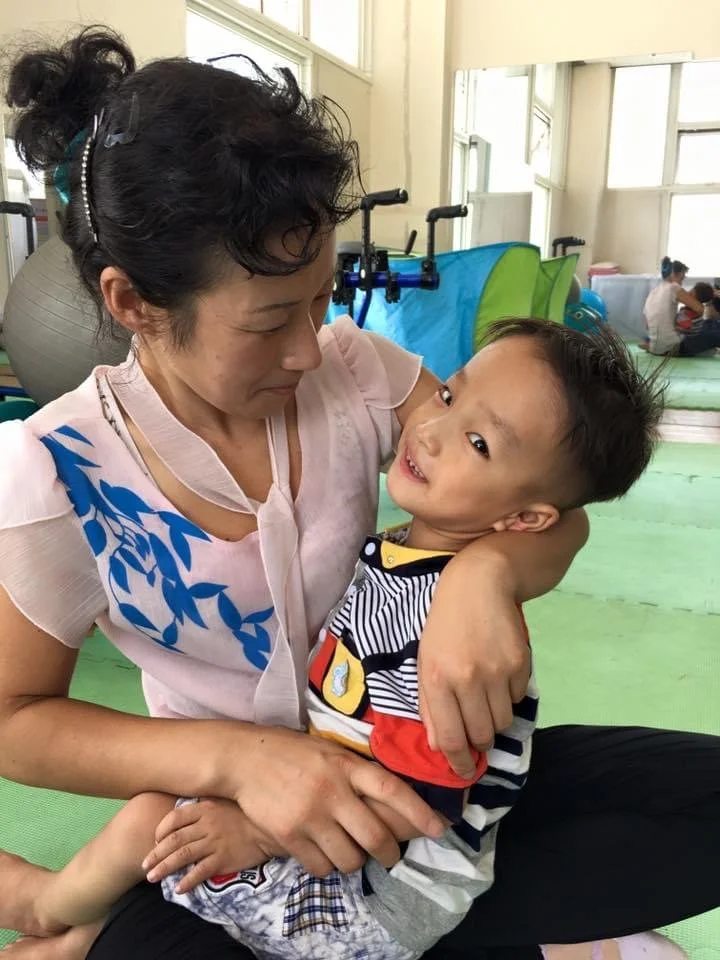Developing DPRK’s Medical Infrastructure
DPRK’s 2025 agenda emphasizes the medical and economic development of North Korea’s provinces outside of Pyongyang. The country is specifically aiming to improve the infrastructure and medical system of the provinces to match Pyongyang hospital standards.
There are 200 divisions of “gunes” in the country. A “gune” is an area division similar to a county or district in the U.S. DPRK’s current objective is to develop all 200 districts in the next 10 years, that is 20 districts every year. Currently, the country is starting in the South Pyongan province, just outside the capital city, striving to upgrade the hospital standards to match Pyongyang standards.
Ryugyong General Ophthalmic Hospital in Pyongyang
The World Health Organization (WHO) has identified four major, critical areas of medicine that would benefit the country’s health. These four key areas include improving communicable disease control, upgrading technological advancements and modernization of the DPRK medical system, enhancing maternal and child health, and caring for long-term diseases including environmental determinants of health.
Despite WHO declaring an end to the COVID-19 pandemic in 2023, DPRK has been slow to re-open its borders and re-engage with the international community. Historically, DPRK has reacted sensitively to any and all communicable disease outbreaks. This was true during the SARS outbreak in 2002 as well as the Ebola outbreak in 2013. In both scenarios, DPRK closed its borders to protect its citizens from communicable diseases. Therefore, it was not surprising that DPRK borders closed again due to the COVID-19 pandemic, but what was surprising was how long the borders remained closed- that is for more than four years.
DPRK borders are still not open to the extent that they were pre-COVID-19. Although DPRK’s rapid response to the pandemic was successful, it caused other hardships as the borders were closed to both the transport of goods and people. To prepare for the next potential infectious outbreak, the DPRK now aims to reinforce its hygiene and anti-epidemic sectors.
DPRK’s Anti-Epidemic Measures
One of DPRK’s main issues is that the medical system, as a whole, is outdated. Both medical education and medical facilities need upgrading. The DPRK’s medical system already implements telemedicine to communicate with and train medical professionals in the provinces, but more technological advances are necessary to provide adequate diagnoses as well as sustainable treatments. Technological improvements would improve overall specialized medical care and surgical procedures for the general population. In particular, advanced imaging is needed to accurately diagnose and treat a variety of health conditions. Modern imaging machines such as X-ray, CT, MRI, and Ultrasound devices are needed.
Already, maternal and child mortality is declining in the DPRK, but more targeted interventions are needed to ensure this trend. In particular, vaccinations are key to ensure the survival rate of infants as well as prenatal and postnatal care and nutrition for pregnant and lactating mothers. Because of border closures, immunization rates fell from 96% to 42% during COVID. Since last year, the DPRK has been working hard to address these gaps in immunization rates.
Now that the pandemic is over, DPRK’s medical system also has res-shifted its focus from communicable diseases to improving its overall healthcare system including treatment of non-communicable diseases. Chronic diseases and conditions, including neurological conditions and cancer, are now among the top priorities of DPRK’s Ministry of Public Health.
Within this new focus is the desire to minimize disabilities. Neurological conditions that can be improved by surgery, such as spina bifida, are being prioritized as well as other disorders such as autism spectrum disorders (ASD), cerebral palsy (CP), and other developmental disorders. In 2025’s New Year’s speech this January, the country even mentioned improving access to Special Education as one of its main goals for the year.
Mother and Child with Cerebral Palsy in the DPRK
DPRK’s focus on enhancing its medical infrastructure provides a vital opportunity for the international community to re-engage inside the nation. This year is a critical juncture for humanitarian organizations and international entities to build trust and collaborate together with DPRK’s Ministry of Public Health. In doing so, the quality of women and children’s lives in the DPRK as well as the lives of individuals with disabilities and those suffering from chronic diseases will drastically improve.
For more information about how to get involved and support efforts to boost DPRK’s provincial medical infrastructure, contact IGNIS Community. You can read more about IGNIS Community’s medical outreach to children with special needs here.


